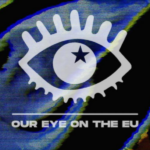
Article by Amerissa Giannouli (giannouli@interaliaproject.com)
The expected impacts of the climate crisis have confronted the social and environmental injustices that are buried beneath the consumption and production patterns of our lives. On top of that, the pandemic is shaking the pillars on which our Western societies are based. To deal with the uncertainties of the future, it is important to have systemic and strategic policies aiming to address these socio-economic and environmental challenges. But more importantly, citizens, public and private institutions need to learn to embrace these uncertainties in ways that allow them to create new futures.
“I don’t want to go back to normal because normal was the problem”
“I don’t want life to go back to normal. I want it to become better”
“ We are not going back to normal lives. We are creating new ones.”
These were among the many statements shared on social media related to the COVID-19 pandemic. These show that these people are looking for something else, something different, a transformation where they can be the leading force of it, a more sustainable trajectory for human evolution. Futures literacy is a tool towards change. It is an instrument that helps people liberate their imagination about the world and deal with the poverty of the imagination at the same time.
Futures literacy refers to the ability to know how to imagine the future and the reasons behind its necessity. According to N. Larsen, J. K. Mortensen, and R. Miller (2020), “Futures literacy enables us to become aware of the sources of our hopes and fears, and improves our ability to harness the power of images of the future, to enable us to more fully appreciate the diversity of both the world around us and the choices we make.”
The origin of futures studies lies in the politicians’ need to deal with the uncertainties in the post-war period of the 1950s. It started as an attempt to design policies and plan for the future. Later on, it became a mechanism for businesses to understand the complexities of the markets and consumers’ preferences. The work of the so-called “futurists” at that time was to create scenarios for the future based on past and present assumptions. This resulted in the colonisation of the imagination of the people for the future with specific views and perspectives related to the past and present which are also connected to the political directions and cultural realities of those times. Take as an example how the narrative for infinite growth or the division between developed and undeveloped countries has shaped our understanding on how the world should be (i.e. aim for more growth so that the undeveloped countries can become developed, this is the only way).
The approach proposed by UNESCO is to use future literacy to liberate imagination, emancipate people and open up the minds to new prospects of existence and community organisation. First, it should be understood that there are many different types of futures. Instead of imposing the experience of today to the future, we need to explore our current assumptions about the future and welcome new ones in order to allow alternative innovations and prospects to come to our lives. The images, ideas, visions and concepts of the future we select to follow can and will be consciously used and reflected in the present we create and experience.
These images, ideas, visions and concepts can be articulated through storytelling. By presenting “how it was” (the Past), “how it is” (the Present) and “how it could be” (the Future), stories have the power to inspire change, either in a persons’ beliefs or in their convictions.
How is this happening?
Storytelling relates event(s) to people and conveys information about these events. If a story keeps an element of truth in it, something that can be associated with life as we know it, those who listen, watch or read the story will be connected, feel that this is relevant to them, exhibit feelings and emotions. Within this experience, the story has the power to intervene in our belief systems, which may lead to change within ourselves and, ultimately, the society. In this sense, you can liberate (but also manipulate and hold captive) someone through storytelling.
Another interesting thing about stories is that they do not resonate the same in each historical time period. Depending on who you are, where you grow up, your community, the political situation you have experienced in different periods of your life, a particular story may be seen differently by you, your parents, your friends, your colleagues, your children, etc. An easy way to see this is to think about your parents, yourself and the children (either your children or the young people of your time). Which are the things that framed their lives? Which were the fears and aspirations that guided their decisions? Comparing theirs to your responses, you will see that there are differences among you. Now imagine how all these are affecting the way you see, experience and live your present. We normally let the past dictate our present. Since the future is uncertain and we cannot control it, it is “safer” to look back on the past. You may find yourself now thinking that maybe the way you live is somehow also connected to the way “your parents” experienced and lived the world. Unintentionally, you may push all this experience in the future, maybe imposing them on the next generations.
Indeed, the most common way for scientists, politicians and business executives to deal with uncertainty is to rely on the past and present to predict the future. This is a way to keep the future as predictable as possible. They achieve this by implementing projects, plans, actions that resemble the outcomes of the past and present. This might not always be bad, however, it limits your imagination and creativity in the way you do things and the way you think about the future.
Futures Labs is a mechanism and a process for unleashing imagination and creativity about the future by making use of the uncertainty. It involves the theoretical principles of futures literacy and provides space for experimentation using different methods and techniques, one of which could be storytelling. Futures Labs expose why and how people use the future by making their anticipatory assumptions explicit. Methodologically, according to R. Miller (2018), Futures Labs apply an approach that involves three phases that structure the learning process: Reveal – Reframe – Rethink.
During the revealing phase, you are requested to state your expected and desirable futures related to a particular issue. By this way, you can distinguish the probable (Which are your expectations for the future?) from the desirable (What are you hoping for in the future?) future. This is the first step to understand that there are more than one futures. Keep in mind that these futures are constrained by your knowledge of the world, the past and the present. To see how these can be connected to your imaginary futures, first, explore what was happening in the past and which trends might have led to the present state. If you wish, you may choose a specific issue that matters to you. Try to find more about how things were in the past in relation to this issue. Which changes related to the trends have affected this issue in the present. What does the present look like now?
Analysing the complexities of your selected issue might help you with your prediction and future stories. You can draw a mind map of your thoughts with regards to the changes that may happen in the future due to this particular issue (Futures Wheel). Simply expand your thoughts and relate them to different elements, such as the economy, the environment, the political sphere, the legal framework, the society in general, the technological developments, etc.
The conversation should stay away from discussions of dystopias and sequences of events. Instead, it is more effective and efficient to describe snapshots of everyday life with as many as possible details. Snapshots that are probable (Predictions) and desirable (Hopes) in a specific year in the future. The selected year in the future is connected to how fast the elements connected to the issue can change. The harder it is for something to change, the further in the future we should go to explore the different scenarios.
To better make sense of the collected information, you could cluster it according to Sohail Inayatullah’s Causal Layered Analysis (CLA). Look for a. the litany (i.e. the quantitative trends and the conventional research indicators for the future), b. the social system and structure (including the economic, cultural, political, and historical factors that affect behaviour), c. the worldviews/ideologies/stakeholders (i.e. the discourse that legitimizes and supports the structure), and d. the metaphors and myths in your scenarios. These elements are connected to your assumptions about the future. Decolonising your imagination means that you liberate your assumptions from past and future trends. Let’s see how this can happen during the next phase.
The reframing phase might be the most difficult to grasp. It basically invites you to experiment with unfamiliar futures in an unfamiliar way. Using the future to prepare and plan has limitations. It takes considerable effort to design this phase in a way that you can develop your capacity to think beyond futures that rely on deterministic causalities. Try to remove, add and/or change elements and assumptions identified and stated in the 1st Phase. In order to build a new scenario think:
- What would the future look like if you remove some of the assumptions you have?
- What would the future look like if you add another assumption that was not there before?
- What would the future look like if you change your assumptions? Try using the opposite assumption.
Now all you have to do is to find a way to play out and explore the different aspects of this new scenario. This is where storytelling can be very useful for Future Labs. Use any artistic expression you prefer such as literature, theater, painting, filmmaking, photography, etc.
If you choose to use theater in your work, you may try out Augusto Boal’s techniques in the Theater of the Oppressed (see example Futures Literacy-Theatre Lab for unaccompanied asylum seeking minors in Greece). Social oppression is associated with the perception we have about ourselves, the possibilities and our capabilities.
Do you like games? If yes, you can play “the thing from the future” card game with your group and explore alternative imaginary futures.
Then, use the CLA framework to cluster your ideas and move on to the next phase.
The rethinking phase compares and contrasts the results of the previous phases. You can see now that on the one hand, your imagination is framed by deterministic parameters and on the other hand, you just started to imagine what it would be like to be able to invent different anticipatory assumptions about the future itself, as well as identify different uses of the future beyond preparation and planning. The process allows you to have some distance from your mental constraints, pushing these mental boundaries towards novelty as they incorporate new images and assumptions for the future.
After this exploratory process and realisation of your assumptions (defined or independent from the past and the present), you can move on to action and work towards a particular goal. This might be the identification of steps required to pursue a specific ideal scenario of the future or in depth research on the elements and constraints that do not allow people personally, socially and systemically to move forward towards other directions, no matter if these directions will be eventually desired or not. With Future Labs, we can broaden our horizons and make sense of the complexities of the systems and the possible futures.
The most important benefit of Future Labs is the ability to use these complexities and uncertainties to create new trajectories which may bring more optimism and hope to people. Indeed, alternative stories of the future open us to a broader spectrum of choices. Optimism and hope are needed more than anything in order to be able to dream, keep being active and participate in a world that is not predefined but has so many different things to offer that can be discovered and explored. By changing the way we see and perceive the future, it offers us the possibility to decolonize our imagination, question our perceptions and worldviews, and ultimately, promote change.
Sources
What Is ‘Futures Literacy’ and Why Is It Important? By Nicklas Larsen, Jeanette Kæseler Mortensen & Riel Miller
Miller, Riel. “Futures Literacy Laboratories (FLL) in practice: An overview of key design and implementation issues.” Transforming the Future (2018): 95-109.
Inayatullah, Sohail (May 12, 2013). “Causal Layered Analysis: Sohail Inayatullah at TEDxNoosa“
Futures Literacy-Theatre Lab for unaccompanied asylum seeking minors in Greece Case Study
The thing from the future game by Stuart Candy and Jeff Watson, Situation Lab 2015.




